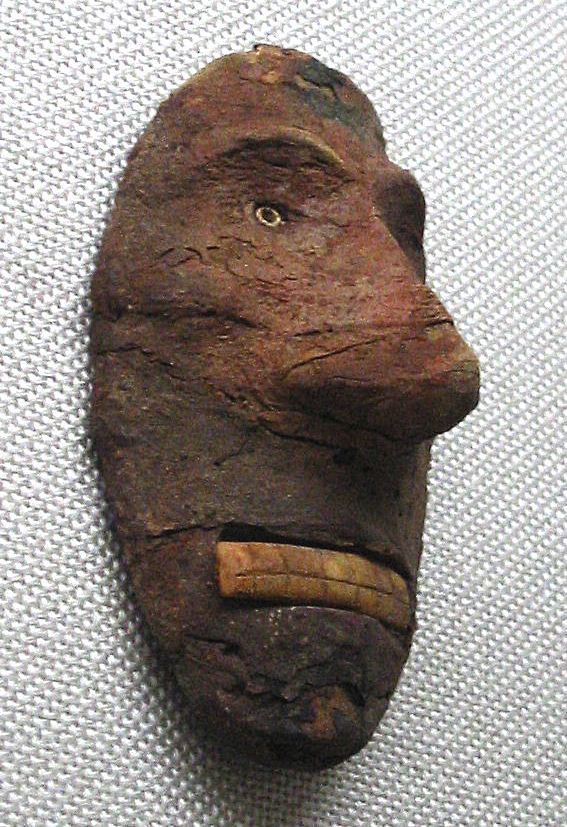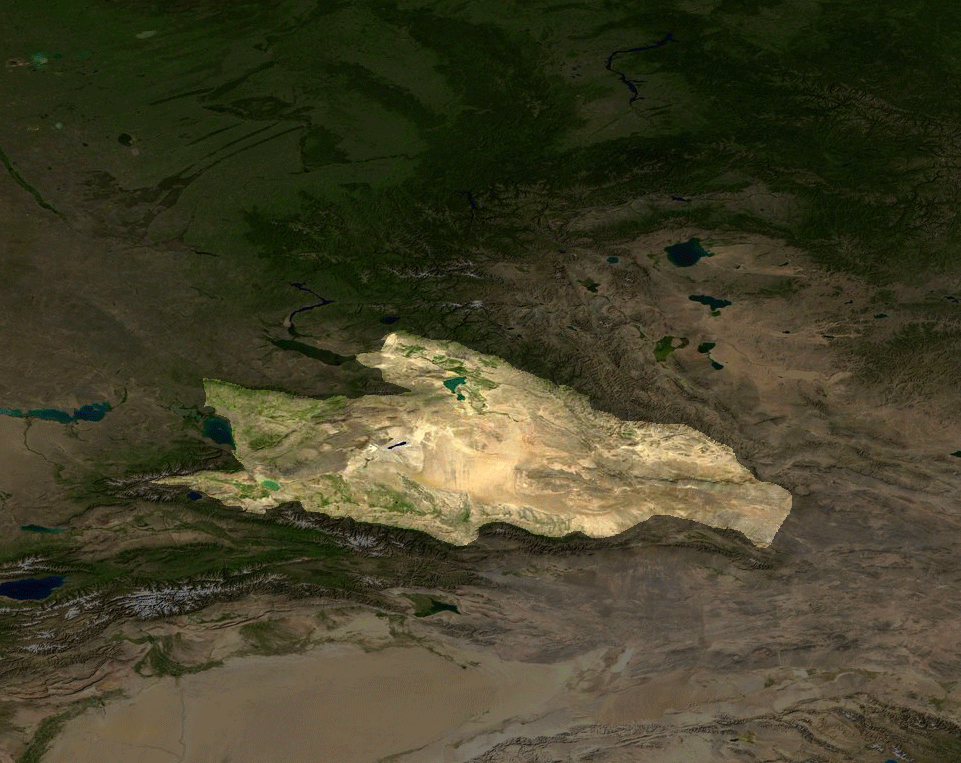china - pannous/hieros GitHub Wiki
The spread of the neolithic revolution is still covered in some mist and myths.
The later spread of the horse, chariot and metallurgy from late Afanasievo cultures is much better understood.
So far the data does not give any evidence of transmission of the inventions of agriculture and domestication to or fro china and Mesopotamia, so that two independent developments of a common plant-collecting-ancestry can't be ruled out. On the one hand people and ideas can traverse those two centers of later civilization in less than a century via early boating. On the other hand it took an astonishingly long time for Eastern Asian pottery to reach the Levante.
In a sense, the revolution came back, because it is quite possible that Vinca proto-writing and all subsequent systems were inspired by pottery symbols from China. The invention of pottery in east Asia ⋍20000 years ago reached the Near East and Europe very late in pre-history:
Pottery reached Persia no later than 8,000 BCE, many centuries before it appeared in the Middle East. Ancient pottery has been found, for instance, at numerous sites in western Persia, including Ganj Dareh (Valley of Treasure) and Teppe Sarab in Kermanshah Province, as well as sites in and around the Zagros Mountains. Human and animal terracotta figurines were a particular specialty of Ganj Dareh. Pottery centres were also found at Susa and Chogha Mish, in south west Iran. It even reached the step cultures earlier than the Near East.

The neolithic in china is extraordinary not only for its early pottery but also for the earliest masks;
The Beifudi is contemporary with Cishan and Xinglongwa archaeological cultures (i.e. 6000-5000 BCE). A number of dwelling foundations were found at the site and remains of what is described as an "altar". A large quantity of carved pottery masks were found, and these are the earliest example of this type of artefact found to date in China.

Pig cat monkey and human masks (no dragon yet)
Again these masks appear in a relatively narrow timeframe 2000 years after the jericho masks:

The likeliest scenario is that (wooden) masks where already part of the Transeurasian culture corridor, which reached the americas 14000BP. The russian totems are a reminder of these old common shamanic roots. Just like Australia received some mayor genetic and cultural updates 4000 years ago, one must also be cautious about the original american culture set.
A much less speculative wave,
The Copper revolution reached China relatively late:
Numerous scholars have suggested that the Afanasevo culture was responsible for the introduction of metallurgy to China about 3000BC, more than 2000 years after copper and copper tools became mainstream in cultures adjacent to the Danube. They were genetically identical to western Yamna people (mostly R1b genes) and also brought horses, the wheel and Indo-European language with them. As well as a myriad of other western technologies such as wheat and barley, domesticated sheep, goat, and cattle.
The spread of the Copper revolution to China can so far be traced from the Majiayao 3300 – c. 2000 BC to the Banshan to the Longshan culture 2900-2000 BC down the Yellow River. This archaeological epoch could be connected with the earliest layer of semi-mystical Chinese History: The Three Sovereigns and Five Emperors, including the legendary Yellow Emperor
Interestingly the Yangtze was civilized just as early if not earlier (3400BC), about the same time as Peru! Such anomalies can only be explained by expansions via ocean-faring-boats. The first definitive prove of those boats comes from the time of Khufu, whose ministers crossed the Red Sea. And possibly from proven trade connections between the Indus valley and Susa. It's plausible to assume that this invention goes back to the time of the Ubaid. However long distant open water boat voyages must have mostly ended as one-way tickets.


Gobleki Tepe snake vis-a-vis Shimao snake
The bronze kings fully arrived about 2300 BC in Shaanxi, when they built the exceptional city of Shimao with its palace’s stone, wood, and earth construction, which was far more sophisticated than what has been found elsewhere in China from this time. The style of Shimao’s stone sculptures, painted murals, and architectural remains are close to the Andronovo and Oxus civilization. The bronze artifacts, hithero unknown to China, give indisputable evidence of strong contact to the Steppe cultures, genetic evidence might in the future might even prove direct anchestry of the elites:
The Oxus civilization 'Anau seal' has five markings which are very similar to Chinese "small seal" characters

As isolated as the Anau seal are the caucasian Xiaohe mummies

:max_bytes(150000):strip_icc()/chinesejar-57a91dc75f9b58974a90edfe.jpg)
Majiayao / 半山 Bànshān culture.

Europoid mask, Lop Nur China
Such enormous influence on the Chinese, though part of Chinese mythological tradition, is becoming politically unpopular in an increasingly nationalistic country. Still many scholars take the sane approach of assuming just such
The Shimao site is the first in china introducing goats! https://academic.oup.com/mbe/article/37/7/2099/5824306
The role of the Afanasevo people in Chinese elites is very obscure: They did not leave much of a footprint in the Y-chromosome dominated East Asian gene pool except maybe for some remnant R1b-L51. However it's sister clade Q1a1 is strongly connected with Han Chinese. One extreme interpretation is that the founding dynasty did not interbreed, did not last long or was replaced by truly indigenous leaders. An even simpler explanation is that the PIE parental line was broken because of female interbreeding. One queen during the centuries suffices in such a model.
Cline from steppe ancestry to xiongnu, shimao and korean megaliths:
Note that in this plot, Afanasievo seems closely related to Xiongnu and Shimao! However in other plots it is apparent that late eastern steppe populations are far removed form European genomes, showing that the Yamnaya widely replaced European people, but intermixed with Asians, making history there way more complex.
The ancient paleolithic humans of Tibet were largely replaced around 3000 BC by Neolithic immigrants from northern China. However, there is a "partial genetic continuity between the Paleolithic inhabitants and the contemporary Tibetan populations". Megalithic monuments dot the Tibetan Plateau and may have been used in ancestor worship.

Following the footsteps of the first copper kings came a second wave of civilization about 1000 years later, with its full bloom starting about 2000BC:
The spread of the Bronze Kings can be traced rather precisely through elite bronze plaques inlaid with turquoise : From the Seima-Turbino and Andronovo cultures and the Tarim realm via Tianshanbeilu via Qijia and Erlitou to Sanxingdui in the Sichuan basin1.

Very specific bronze weapons (spears with hook) follow the same route. Even though the Copper Age is mostly absent from China, the Bronze Kings did not find 'virgin' territory: Earlyer cultures of very fine stone and jade workings like the Longshan were incorporated nearly seamlessly into the 'first dynasty'. From the time of the first copper in the Danube in 5500BC to the first true proto-historic dynasty in China about 2000BC (3000 years later), many pioneers might have reached eastern Asia with limited impact.

The archaeological Erlitou finds of central importance are nowadays more or less confidently connected to the (proto)historic Xia and/or Shang dynasties.
The Asian corridor, now called "Proto-Silk-Road" carried other inventions in the opposite direction(east to west): Millet about 2000BC and much earlier pottery : from Korea 20000BC to the Levante ⋍6500BC. However civilization with metallurgy, typical cities, elite burials, cattle, the wheel and many other inventions only started to take off with the arrival of 'Aryan' or 'Uralian' charioteers.
Corridor of the Bronze Elite reaching China 2500BC-1800BC:

The palace plan/style first seen in Erlitou served as a bases for every later construction until the 20th century!
(colonnades, (3doored?) entrance to the south, rectangular stair/terrace temple in the north, gallery, inner courtyards)
In a third wave, charioteers (likely PIE proto-Tocharians) conquered the Xia dynasty and founded the Shang dynasty.
That was the last time speakers of Indo-European formed an elite in China. In the last 2200 years most traced of their language influencing the Sino-Tibetian populace have all but vanished. Unless one looks closely at important words or the whole dictionary by frequency (⋍50% coincidence/mnemonics).
The Shu of Sichuan on the Yangtze had a bronze bird tree with [nine](nine bows) flower buds and nine birds on them. Their sculptures are reminiscent of the Olmec.
In a last wave about 1200BC charioteers from Gansu/Shaanxi conquered the Shang dynasty and founded the Zhou dynasty. In the last years of the Shang Dynasty the ritual vessels were made of terracotta instead of bronze; The Shang being deprived of the supply monopoly, other cultures took over - an alliance of surrounding vassal: Qin, Jin, Yan, Wei, Wu, Chu, Shu ... and amongst them the Zhou of Xi'an.
The Zhou were (not only) farmers against the Shang tyrants and established a moral in which the King has very specific duties towards his people "Heavenly mandate". Writing was instrumental in their later domination of much of the North and East. The ideograms/logograms constituted common ground for people with different languages!
In the 7th century Manchu tried to replace Chinese with an alphabetic system! It was consciously abandoned: "Mongolia and European countries rule with a phonetic alphabet. This is impossible in China because of the many languages"
Writing has played a fundamental role in establishing the unity of at least two diverse empires: Egypt and China.
Warring states Zhou: Feudal system.

https://en.wikipedia.org/wiki/Sawgoek of Cuengh people (獞 'wild dog' / 僮 Zhuàng 壮 strong)
Their population, estimated at 18 million people, makes them the largest minority in China. The Zhuang languages are a group of mutually unintelligible* languages of the Tai family, heavily influenced by nearby varieties of Chinese. Therefore, Zhuang people from different dialect areas use Chinese to communicate, 55% were bilingual.
The glyphs bear some semblance to the glyphs of the Hemudu culture, Wucheng culture, Maqiao ruins (stratum V), Taihu Late Neolithic, and other Old Yue ruins in Guangdong.
The Wucheng culture (吳城文化) was a Bronze Age archaeological culture on the Yangtze in Jiangxi, China. Shards were found with horizontal sequences of 37 graphs, suggesting that they may be a form of writing, but quite different in form from oracle bone characters.
About 3500 'they' also replaced the Paleolithic Taiwan population.
CHINA - Indonesia
The sea-way at this time was quicker than the river-way:
Money Urbanization preceded metallurgy (or they did not find much ore on the Yangtze) :
良渚文化 Liangzhu wenhua, canal city 3300BC entered its prime around 2500 BC @ Yángzǐ 揚子
The Liangzhu culture (/ˈljɑːŋˈdʒuː/; 3400–2250 BC) was the last Neolithic jade culture in the Yangtze River Delta of China. The culture was highly stratified, as jade, silk, ivory and lacquer artifacts were found exclusively in elite burials, while pottery was more commonly found in the burial plots of poorer individuals. This division of class indicates that the Liangzhu period was an early state. A 2007 analysis of the DNA recovered from human remains shows high frequencies of Haplogroup O1 in Liangzhu culture linking this culture to modern Austronesian populations. It is believed that the Liangzhu are ancestral to Austronesian speakers.
蓟 Khan Balog (beluga = fish/city) old Turkish name for Peking (used by Marco Polo) yu,ji,jing
中國 Zhōngguó 中国 > ★Chingua > China
Zhōngguós Kahn > Djingis Khan?
The skulls at Shimao foreshadowed the massive human sacrifice that became what Li calls “a defining attribute of Shang civilization” many centuries later (from around 1600 to 1046 B.C.) before succeeding dynasties put an end to the practice.
Shimao stone structures have more relation to the steppe than to the Central Plains. Of course they do. Shimao also introduced oxen and sheep as herded animals for subsistence … and metallurgy.
Jew’s harp musical instrument
“Shimao is the birthplace of the mouth reed,” says Sun, noting that the instrument spread to more than 100 ethnic groups across the world. “It is an important discovery that provides valuable clues to explore the early flows of population and culture.”
Did indoeuropäers leave any generic footprint in china? They did, but the signature quickly faded in the masses:
https://www.mpg.de/16470802/0222-evan-genomic-insights-into-the-origin-of-pre-historic-populations-in-east-asia-150495-x
It will be most interesting to analyze chinese mummies: For example the Xiaohe cemetery site, Lop Nur:
More than 30 extremely well preserved mummies have been discovered. These graves are believed to date from as early as c. 1000 BCE.
The Shirenzigou iron culture ⋍0BC was initially published to be remnants of the early Yamnaya wave, not later Andronovo/Oxus agriculturists. They formed a heterogenous broad cline / bridge to NE-Asiatic populations (Hun⇔Han⇔Korean) :

These results were challenged:
“Interestingly, one of the Shirenzigou nomads belongs to Y-haplogroup R1a-Z93, which is an obvious Sintashta-related lineage. Both Ning et al. and Wang et al. missed this important fact.”
Formal stats have the problem that the Central Asian ancestry dampens the Early European Farmer (EEF) signal in the Sintashta-related ancestry. This is an artifact that once caused scientists at Harvard to believe that Central Asian Scythians and present-day South Asians lacked Sintashta-related ancestry.
Tarim Mummies surprisingly found to be Holocene ANE relics with (near) zero influx of BMAC or Afanasievo ancestry!
On the other hand Afanasievo contributed 70-90% to neighboring Dzungaria Early Bronze Age populations, and the Inner Asian Mountain Corridor between Tian Shan and Altai, connected to the 甘肃/河西 Gansu/Hexi Corridor.
准噶尔 盆地

Connecting Kyrgistan to Western China via Urumchi Turpan (Korla?) Hami Yumen Xining. That corridor was greener before the fragile environment was over exploited.
"Chinese bronze metallurgy initially derived from the cultures of the Eurasian steppes" :
Seima-Turbino Culture and the Proto-Silk Road
https://www.academia.edu/45055541
Ethnonym for Seima-Turbino was 鬼戎 Gǔiróng @ 鬼方 guǐfang ⇔ 𓃶 贵 guì
𓃶 Han Hun 𒂠 ḪUN "noble" 獯鬻 hun-juk Xunyu 猃狁 獫狁 玁狁 Xianyun 匈奴 Xiōngnú
北狄 Beidi Dí
Gui officials even managed to achieve high statuses in the Shang court; for examples, a Gui official, Geng, was ordered to perform the gang sacrifice 剛 in the xiang 亯 sacrificial temple.[7]
the Marquis of Gui (鬼侯) ranked among Di Xin's Three Ducal Ministers